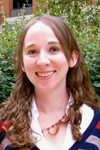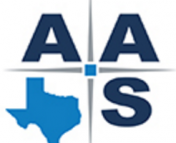In this series of posts, we sit down with a few of the keynote speakers of the 229th AAS meeting to learn more about them and their research. You can see a full schedule of their talks here!
 Prof. Laura Lopez’s work bridges many gaps: between theory and observation, across the electromagnetic spectrum, and from beginning to end of stellar lives.
Prof. Laura Lopez’s work bridges many gaps: between theory and observation, across the electromagnetic spectrum, and from beginning to end of stellar lives.
Lopez is an Astronomy professor at Ohio State and received this year’s Annie Jump Cannon Award for outstanding research and promise for future research by a postdoctoral woman researcher. She will be giving a keynote talk at #AAS229 entitled: “The Tumultuous Lives and Deaths of Stars.”
Lopez started her research career early, beginning at MIT as an undergrad. There she worked with Herman Marshall on X-ray binary jets and was hooked on high energy astrophysics. She earned her B.Sc. in Physics and moved on to Penn State for her Ph.D, where she planned to continue her work on X-ray binaries and Active Galactic Nucleus (AGN) . However, within a year, Lopez considered changing departments: “There is an uncertainty to [transferring]…but I felt like I wanted to broaden.” She transferred to UC Santa Cruz the next year and began new work on supernova remnants and star formation.She advises graduate students now, “If for whatever reason, you find that the grad program isn’t perfectly suited, it is possible to change programs.”
The decision to broaden her interests paid off. Lopez began her graduate career quantitatively characterizing the shapes of supernova remnants (SNRs), motivated by a SNR that possibly arose from a gamma-ray burst. She later again broadened her research to the focus of her plenary talk: stellar feedback, or the injection of energy and momentum, into the interstellar medium (ISM). This feedback occurs in many forms (like photoionization and stellar winds) at the smallest scale of individual stars, yet the feedback shapes the entire ISM of a galaxy. Lopez highlights that there has been a “huge explosion in people who are thinking about the role of stellar feedback’” within the last ten years. This new interest has lead to recent developments in both simulations and observations which have allowed Lopez to explore these extremely small physical scales.
Astronomers with two specialties are uncommon, but Lopez believes that the extra effort has well worth it. People often consider astronomy as broken into discrete subfields, but becoming an expert in multiple problems allows you to see the overlap and bring new ideas to the table. In addition to adding breadth to your research, Lopez encourages young researchers to “always be writing” (even when starting a new project!) and to remain engaged with the academic community.
To learn more about Lopez’s fascinating work, be sure to see her talk on 11:40 AM on Jan. 4th at #AAS229!

